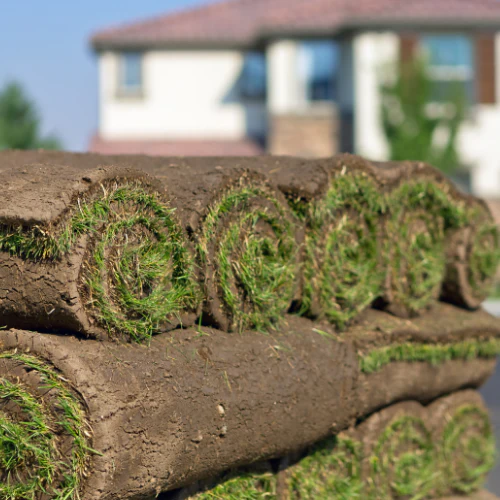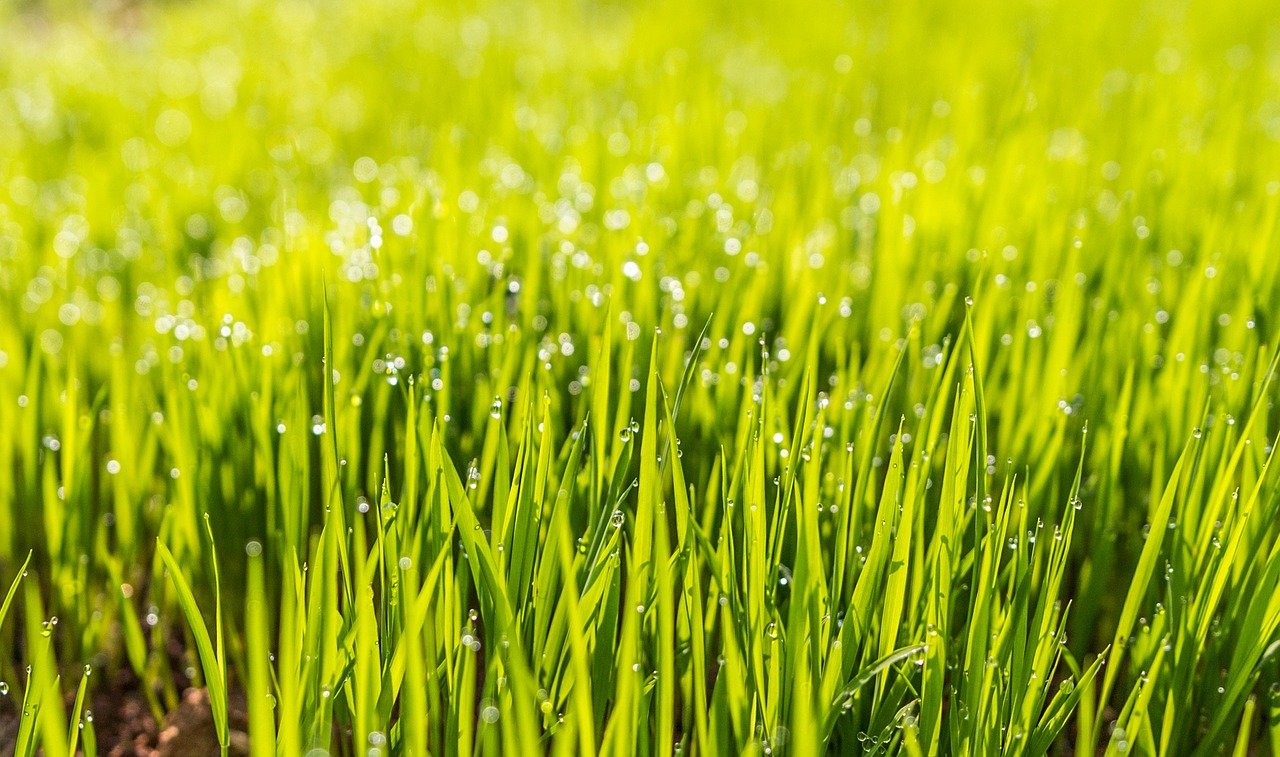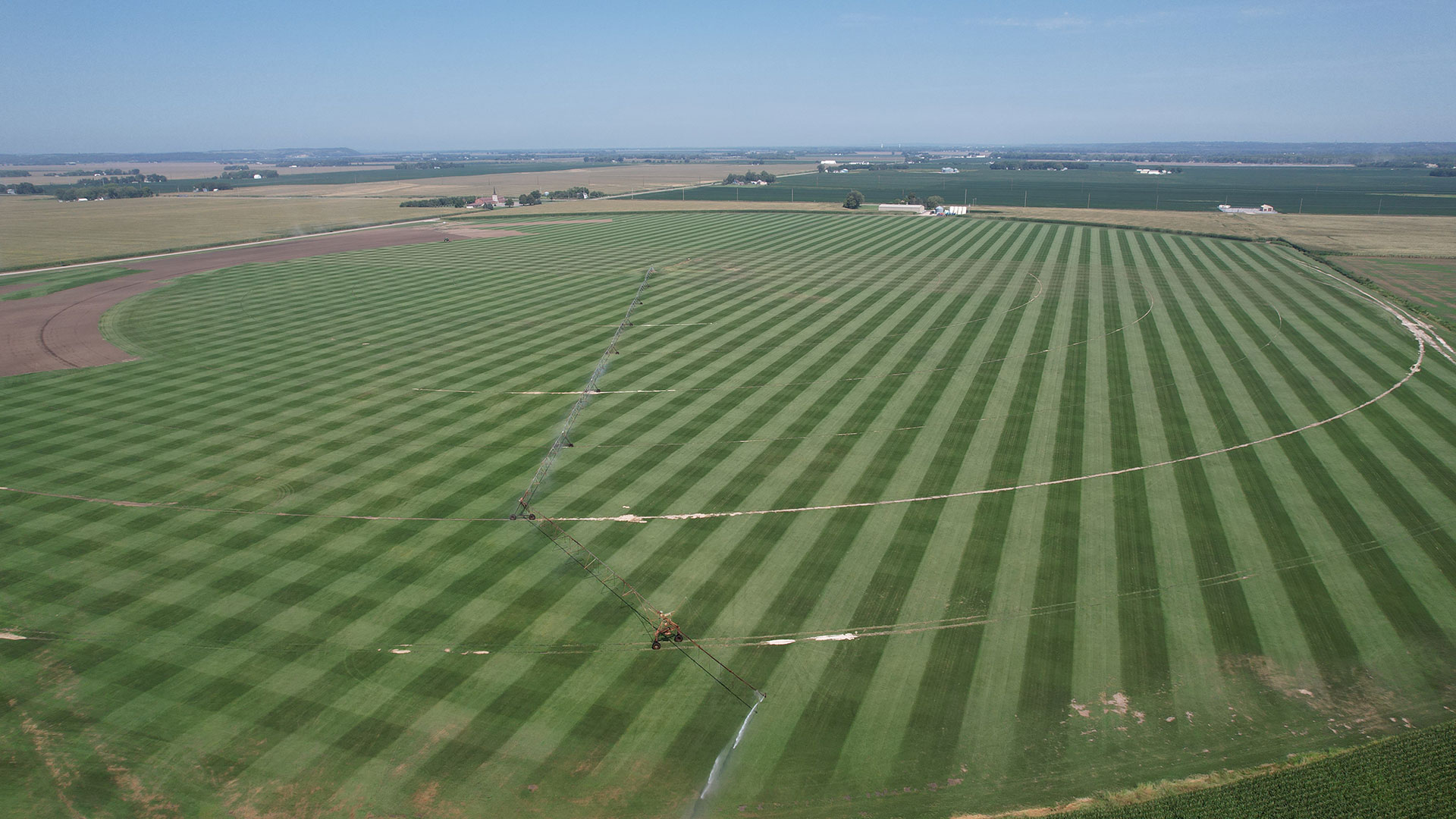Managing Sod Storage In Different Weather Conditions
July 1, 2024
Category, Fescue Sod

The importance of storing sod appropriately in different weather conditions is the difference between fresh, usable sod and sod that has decayed, been damaged, or has become unstable. Sod storage that accounts for different weather is crucial to ensuring it can be used in the way it is intended. Improper sod storage can lead to major loss of product, high costs, and late deadlines on key projects in your home or for clients you are working with. Below we discuss how to store sod, accounting for different weather conditions, in order to keep it at its highest quality.
Get a free professional installation estimate for re-sodding your lawn today!
Storing Sod In Hot Weather
The key factors to storing sod in hot weather are to avoid heat buildup, dehydration, and long-term damage. For starters, storing sod in the shade and on an elevated platform helps prevent the heat from the ground drying out the sod and protects against the drying of direct sunlight. It is also important to mist the sod with cool water and focus on hydrating the sod when it is very hot out, as, again, drying out the sod is what must be avoided.
Keeping sod below 85F is the suggested temperature for storage, with a moderate amount of humidity in the storage environment. These levels of temperature and humidity allow the sod to maintain moisture retention, which in turn allows the sod to maintain its health and viability for use. Following these guidelines will protect your sod in storage during hot weather.
Avoiding Direct Sunlight
As we discussed above, preventing direct sunlight on the sod is crucial, as it can dry out the sod and even cause discoloration. On top of this, the very warm temperatures can cause moisture deep within layers of sod to mold and rot from the inside. Lastly, avoiding direct sunlight helps prevent heat stress, which makes it more difficult to lay sod later on when in use. All of these reasons are why you must avoid sod being stored in direct sunlight.
Storing Sod In Cold Weather
Avoiding freezing temperatures is the main focus for storing sod in colder environments. Much like heat, if sod freezes, it can damage the grass by having cells burst when freezing due to expansion. This can flat-out kill your product and make it highly unusable for most purposes with sod. Freezing of the roots can lead to delayed setting and setting issues in general when you go and lay the sod. Finally, due to freezing, water can be drawn out of the grass and dry out, making it unusable once again.
To avoid cold damage from sod, it is important that the area where the sod is being stored stays above freezing. Covering with tarps and blankets can help prevent sod from getting super cold. Manually checking the temperature of the sod can help you gauge the temperature, and keeping the sod indoors will prevent potential frost damage as well.
Minimizing Moisture
Even in cold weather, sod must be misted to stay hydrated and in peak working condition. That being said, it is important to only mist when needed and to not overmist during this time. Allowing proper drainage after misting in the storage area is also crucial to minimizing moisture, which could mold or freeze dependent on the storage environment.
Using Protective Covers
While our Fescue Sod requires little maintenance, protective covers should be used to cover sod in cold weather, especially if rain or snow is able to contact them during the storage window. As we said above, minimizing moisture is key, and having snow or rain on the sod in cold weather could cause serious damage to your product. Larger amounts of snow could freeze individual blades of grass, causing the ability to lay the sod to reduce drastically. While weather can be a challenge, using blankets and tarps to maintain temperatures in colder environments is vital to protecting your sod.
Sod Management In Varying Weather
Storing sod is easy when you are able to anticipate the weather and plan for it accordingly. Any extreme temperatures, cold or hot, have the chance to ruin your sod or make it harder to work with. By taking the proper precautions dictated by the seasonal weather you are experiencing, you can ensure your sod maintains good quality and health. Furthermore, when you go to use the sod, you will be able to use it as intended and without struggle. Sod storage is a fundamental part of using this product, so accounting for different weather conditions is the best way to keep your product at its highest quality.
Get a free professional installation estimate for re-sodding your lawn today!


